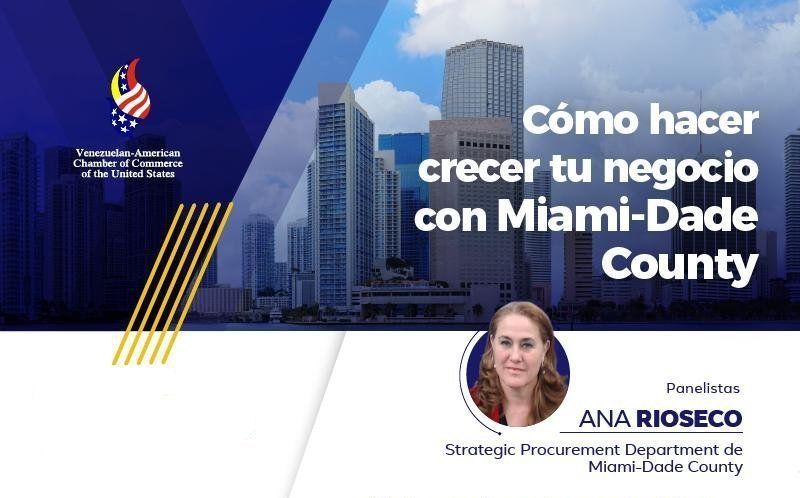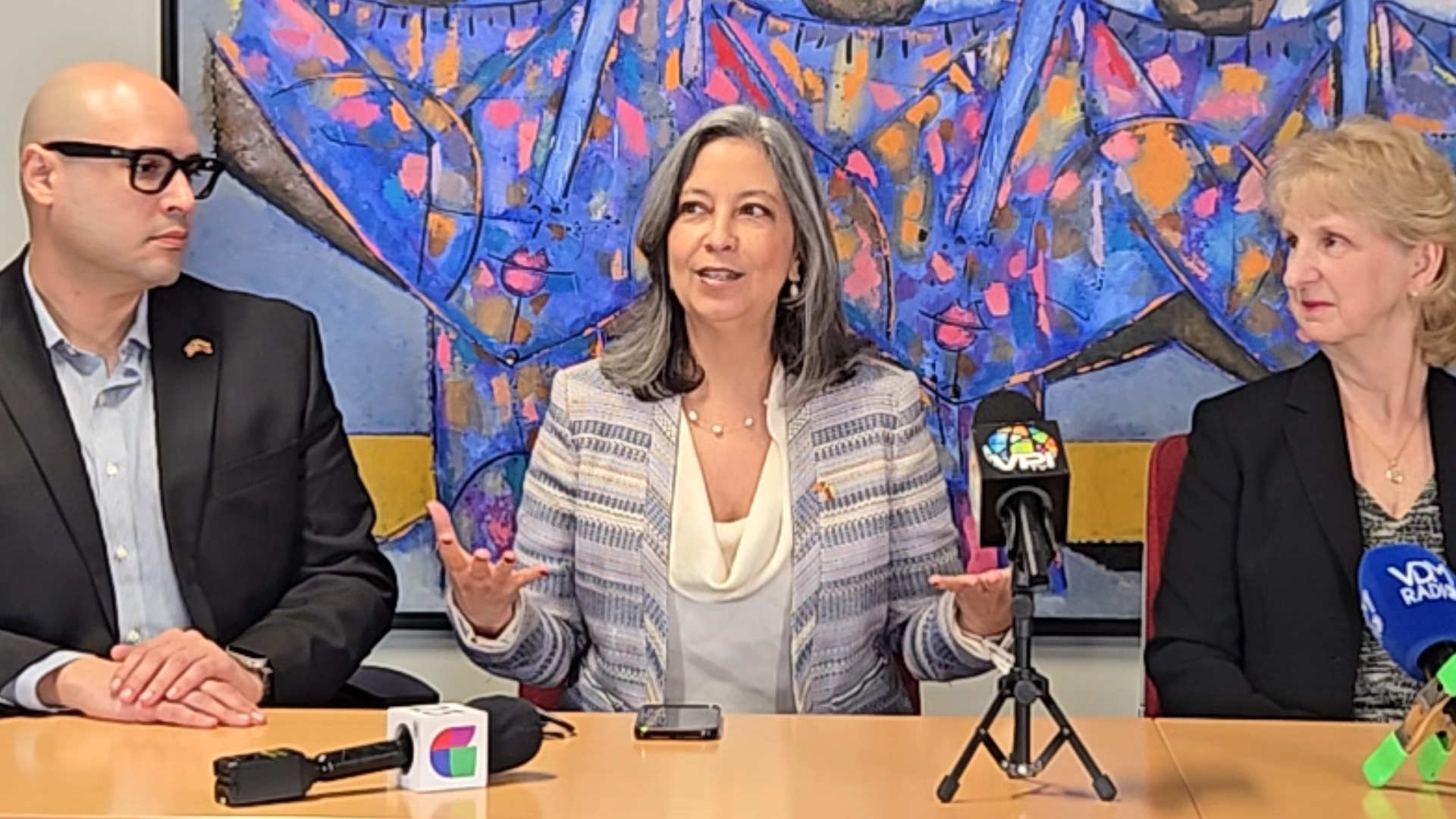Inflación vs Retiro en los 60+ años

En el mundo de las finanzas personales hay un dicho que dice:
"Si te parece que es complicado ahorrar en este momento, espera a que estés jubilado y verás lo complicado que es vivir sin ahorros."
A lo cual le podríamos agregar que mucho más complejo es estar jubilados sin ahorros y con la inflación más alta desde la década de los 80.
Según un estudio realizado por Allianz y publicado en Forbes, por cada 2 americanos 1 señala que siente que con estos incrementos de precios cuando deje de trabajar no va a poder cubrir los gastos básicos de vida.
Ahora, la buena noticia es que la mayoría de los economistas no prevén que la inflación vaya a ser mucho mayor a la actual. Más bien piensan que en dos o tres años ya debería estar controlada. Pero igual que cuando pasa una gran tormenta, esta situación dejará su huella.
No vayas a creer que todo va a bajar inmediatamente, sólo dejarán de crecer los precios como lo venían haciendo y todo estará costoso.
Es por ello que en el este artículo compartiremos 5 estrategias que pueden utilizar los hispanos que se encuentran por jubilarse en los Estados Unidos o aquellos que ya están retirados, para luchar contra esta inflación en tu retiro y no morir financieramente en el intento:
1) Postergar los beneficios del Seguro Social:
A pesar de las múltiples críticas que muchos realizan a los beneficios del Seguro Social al jubilarte.
Es indudable que es una de las fuentes de ingresos más importantes con la que cuentan los jubilados en USA, más de 50 millones de personas reciben este beneficio y para el 70% de los retirados representa la entrada más grande que van a recibir.
Por otra parte, tiene una característica sumamente beneficiosa:
En este periodo inflacionario, llamada por sus siglas en inglés COLA (Cost-of-living Adjustment), la cual permite que el monto que vas a recibir sea periódicamente ajustado por el incremento de los precios.
Por ejemplo, para el año 2022, el monto promedio de beneficio fue aumentado a un 5,9% siendo este uno de los ajustes más altos que se ha dado.
Si bien es cierto sabemos que la inflación está muy por encima de ese valor, no deja de ser una gran ventaja.
Ahora bien, el gran problema es que la mayoría de los Hispanos o Latinos son inmigrantes, por lo que es muy probable que no hayan cotizado durante 35 años para aprovechar así el monto que van a recibir.
Entonces mientras el trabajador promedio va a recibir luego del ajuste del año 2022, un monto de aproximadamente $ 1.657, el Latino inmigrante va recibir un monto mucho menor, por no tener tantos años cotizando.
Por lo que antes de caer en pánico, sugerimos que una de las mejores estrategias es procurar al máximo postergar la solicitud de este beneficio ante el Seguros Social, permitiendo así:
- Acumular más años de cotizaciones para mejorar tu promedio.
- En promedio por cada año que esperes, vas a lograr que el monto de tu beneficio suba un 8%, este cálculo es únicamente referencial pero una persona que comience a recibir esta pensión a los 62 años va recibir casi que un 24% menos que una que espere hasta los 67 años.
2) Invertir o cambiar tu portafolio de inversión:
Hay una gran diferencia de este nuevo periodo inflacionario versus el que se vivió en los años ochenta.
En aquella época podrían dejar su dinero en un Certificado de Depósito en el banco de su confianza y ganar una muy buena tasa de interés.
Para que tengamos una idea en 1981 este tipo de instrumentos bancarios pagaba en promedio un 18% (según data del St. Louis Federal Reserve).
Por lo que usted como ahorrista no tenía mayores incentivos de buscar donde invertir su dinero buscando niveles de riesgos más altos.
Ahora, la situación actual es diametralmente distinta, puesto que un Certificado de Depósito en promedio no rinde ni siquiera un 0,25% (según Bankrate.com) y la inflación está por encima del 8%.
Muchas personas con más de 60 años dirán: Bueno entiendo que mi dinero en la cuenta bancaria, cada día se va deteriorando debido al efecto destructor que tiene la inflación en mi poder adquisitivo.
Pero cometen el siguiente error y dicen: Por mi edad y como es dinero para mi retiro debo tener todo invertido en bonos. Pero resulta que, en este momento, si bien es cierto que las tasas de interés vienen subiendo, el rendimiento que pagan los bonos está muy por debajo de la inflación.
Por lo que los inversionistas con más de 60 años deben incluir un porcentaje de acciones en su portafolio.
¿Y por qué acciones, si más bien dicen que mientras te vayas poniendo mayor no debes invertir en acciones? puesto que es una de las pocas inversiones que ha demostrado históricamente que le puede ganar a la inflación en el tiempo.
Léase bien que estamos diciendo invertir en acciones y no especular con acciones que son dos conceptos totalmente distintos.
Lo que estamos sugiriendo es invertir de una forma ampliamente diversificada, utilizando preferiblemente fondos de índices o Exchange-Traded Funds (ETF). Los que permitan tener un poco de todos los sectores de la economía. Recordando que especular o jugar al casino como muchos lo ven, se trata justamente de creer que usted va a poder de forma continua determinar cuál va a ser el caballo ganador o en este caso la acción ganadora.
Por supuesto antes de invertir en el mercado de acciones siempre consulte con su asesor financiero de confianza.
3) Seguir trabajando y aportando en una cuenta Roth IRA
Por supuesto que una de las medidas más sencillas que todo el mundo propone es reducir tus gastos y seguir un presupuesto.
Pero en la práctica vemos que no es tan fácil como nos lo dicen puesto que si bien es cierto cuando uno se jubila hay muchos gastos que bajan.
Por ejemplo, ya no necesitas comprar ropa costosa para ir al trabajo o tienes la necesidad de comprar el carro último modelo, porque realmente eso del qué dirán comienza a tener menos sentido.
No es menos cierto que los gastos en medicinas y situaciones médicas comienzan a subir y quizás te encantaría hacer ese viaje que siempre quisiste hacer, por lo que no pudiéramos decir que tus costos van a desaparecer.
Por lo que una buena opción es seguir trabajando y aprovechar esta nueva tendencia de trabajos a distancia.
Donde si bien es cierto capaz no trabajaras con un cargo como el que tenías antes de jubilarte, si puede ser una excelente opción para generar algún ingreso desde tu casa.
Recordando que en la medida en que puedas generar un ingreso por trabajo vas a poder seguir aportando a una cuenta de Retiro Individual llamada ROTH IRA.
Las cuales no tiene restricciones en cuanto a la edad que tengas, pudiendo para este momento contribuir con unos $ 7.000 al año e invertirlos y sin tener que pagar impuestos sobre el rendimiento que produzca este dinero.
Sirviendo esta cuenta ROTH IRA, como una nueva fuente de almacenaje para cuando ya estés en tu retiro o poder usarla como un mecanismo para dejar un legado a tus seres queridos puesto que no estarás obligado a sacar ese dinero al llegar a una cierta edad como ocurre con las cuentas IRA.
4) Restructuración o Downsizing
Sabemos que luego de todo lo que trabajaste y luchaste para por fin tener la casa de tus sueños, el siquiera pensar en mudarte pudiera ser la peor de las sugerencias.
Pero también visto financieramente el tener una casa que quizás sea muy grande para tu jubilación cuando ya tus hijos están por irse o ya se fueron.
Puede representar unos costos muy importantes en mantenimiento y ni hablar de un concepto llamado Costo de Oportunidad.
El costo de oportunidad: lo que implica es que, será que si vendo esta casa y me compro una más pequeña con el dinero extra que me está quedando pudiera invertirlo y hacerlo crecer para que cuando lo vaya necesitando lo pueda utilizar.
Veamos esto de una forma muy práctica si ese dinero lo invertiste en un portafolio en cualquier momento vas a poder hacer un retiro parcial o total por las cantidades que vayas necesitando para tu día a día.
En cambio, si estuviera invertido en un inmueble es sumamente complejo decir hoy voy a vender un pedacito de este cuarto o tengo que vender la mitad del baño.
Si bien es cierto muchas personas te dirán que puedes financiarte usando el valor que tiene tu casa.
No sentimos que sea lo mejor para este momento en que las tasas de interés vienen subiendo y más bien parte de la restructuración que debes realizar, es ir cerrando todas tus deudas para que cuando te jubiles y no tengas una fuente constante de ingresos no tengas que estar pagando una cuota en préstamos y mucho menos en tarjetas de crédito.
5) Acudir a un Planificador Financiero
En temas financieros y mucho más cuando hablamos de tu retiro es sumamente complejo tomar medidas objetivas donde tus sentimientos, experiencias y emociones no te jueguen en contra y te hagan tomar decisiones que eventualmente no sean las más adecuadas.
Es allí donde las personas deciden acudir a un planificador financiero, siendo este un profesional que diariamente ve innumerables casos como los tuyos.
Un asesor financiero posee herramientas avanzadas que te permiten visualizar las acciones que debes tomar para lograr esa meta del retiro independiente y manteniendo la calidad de vida que te has propuesto.
Visto de otra forma está bien que si simplemente te duele un día la cabeza te tomes una pastilla. Pero si más bien ves que tienes una situación importante a nivel de salud, las personas normalmente acuden donde un especialista para que les ayude y no se les ocurriría automedicarse.
Eso mismo es lo que debes hacer si estás pensando cómo optimizar tu retiro.
Muchos nos preguntan a dónde debo acudir y es allí donde los profesionales que son CERTIFIED FINANCIAL PLANNER™ son una tu mejor opción y podrás buscar al que desees accediendo al siguiente link: https://www.letsmakeaplan.org/
En conclusión, hay muchas opciones a tomar para luchar con esta inflación y evitar morir financieramente en el intento, lo importante es no preocuparte sino ocuparte.
Breve Biografía del Autor:
Alonso Rodríguez Segarra CFP ®, Fundador & CEO Advise Financial
Alonso, reconocido como el primer venezolano en obtener la prestigiosa certificación de "CERTIFIED FINANCIAL PLANNER™" en USA. Comprometido como asesor financiero para latinos, con más de 20 años de experiencia en el mundo de las finanzas, siempre trabajando bajo el criterio fiduciario.
Inflation vs Retirement in the 60+ years
By Alonso Rodríguez Segarra

In the world of personal finance there is a saying that goes:
"If you think it's hard to save right now, wait until you're retired and you'll see how hard it is to live without savings."
To which we could add that it is much more complex to be retired without savings and with the highest inflation since the 1980s.
According to a study carried out by Allianz and published in Forbes, for every 2 Americans, 1 indicates that they feel that with these price increases, when they stop working, they will not be able to cover basic living expenses.
Now, the good news is that most economists don't expect inflation to be much higher than it is today.
Rather, they think that in two or three years it should already be under control. But just like when a big storm passes, this situation will leave its mark.
Do not think that everything will go down immediately, prices will only stop growing as they have been doing and everything will be expensive.
That is why in this article we will share 5 strategies that Hispanics who are about to retire in the United States or those who are already retired can use to fight against this inflation in your retirement and not die financially in the attempt:
1) Postpone Social Security benefits:
Despite the many criticisms that many make of Social Security benefits when you retire.
There is no doubt that it is one of the most important sources of income for retirees in the USA, more than 50 million people receive this benefit and for 70% of retirees it represents the largest income they will receive.
On the other hand, it has an extremely beneficial feature:
In this inflationary period, called by its acronym in English COLA (Cost-of-living Adjustment), which allows the amount you will receive to be periodically adjusted by the increase in prices.
For example, for the year 2022, the average benefit amount was increased to 5.9%, this being one of the highest adjustments ever made.
Although it is true that we know that inflation is well above that value, it is still a great advantage.
Now, the big problem is that the majority of Hispanics or Latinos are immigrants, so it is very likely that they have not contributed for 35 years to take advantage of the amount they are going to receive.
So while the average worker will receive an amount of approximately $1,657 after the 2022 adjustment, the Latino immigrant will receive a much lower amount, for not having contributed for so many years.
Therefore, before panicking, we suggest that one of the best strategies is to try as much as possible to postpone the application for this benefit with Social Security, thus allowing:
- Accumulate more years of contributions to improve your average.
- On average, for each year you wait, you will achieve an 8% increase in the amount of your benefit. This calculation is for reference only, but a person who begins to receive this pension at age 62 will receive almost 24% less than one that waits until age 67.
2) Invest or change your investment portfolio:
There is a big difference in this new inflationary period versus the one lived in the eighties.
At that time they could leave their money in a Certificate of Deposit in the bank they trust and earn a very good interest rate.
To give us an idea, in 1981 this type of banking instruments paid an average of 18% (according to data from the St. Louis Federal Reserve).
Therefore, as a saver, you did not have greater incentives to look for where to invest your money looking for higher risk levels.
Now, the current situation is diametrically different, since an average Certificate of Deposit does not yield even 0.25% (according to Bankrate.com) and inflation is above 8%.
Many people over 60 will say: Well, I understand that my money in the bank account deteriorates every day due to the destructive effect that inflation has on my purchasing power.
But they make the following mistake and say: Because of my age and since it is money for my retirement, I must have everything invested in bonds. But it turns out that, right now, while it is true that interest rates have been rising, the yield paid by the bonds is well below inflation.
Therefore, investors over 60 years of age must include a percentage of shares in their portfolio.
And why shares, if rather they say that while you get older you should not invest in shares? since it is one of the few investments that has historically shown that it can beat inflation over time.
Read well that we are saying invest in shares and not speculate with shares that are two totally different concepts.
What we are suggesting is investing in a broadly diversified way, preferably using index funds or Exchange-Traded Funds (ETFs).
Those that allow to have a little of all the sectors of the economy. Remembering that speculating or playing the casino as many see it, it is precisely about believing that you will be able to continuously determine which is going to be the winning horse or in this case the winning action.
Of course, before investing in the stock market, always consult your trusted financial advisor.
3) Keep working and contributing to a Roth IRA
Of course, one of the simplest measures that everyone proposes is to reduce your expenses and follow a budget.
But in practice we see that it is not as easy as they tell us, since although it is true when one retires there are many expenses that go down.
For example, you no longer need to buy expensive clothes to go to work or you have the need to buy the latest model car, because really what they will say begins to make less sense.
It is no less true that the expenses for medicines and medical situations begin to rise and perhaps you would love to take that trip that you always wanted to do, so we could not say that your costs are going to disappear.
So a good option is to continue working and take advantage of this new trend of remote work.
Where, although it is true, you will not be able to work with a position like the one you had before you retired, it can be an excellent option to generate some income from your home.
Remembering that as long as you can generate income from work you will be able to continue contributing to an Individual Retirement account called ROTH IRA.
Which has no restrictions as to how old you are, being able to contribute about $7,000 a year at this time and invest them and without having to pay taxes on the income produced by this money.
Serving this ROTH IRA account, as a new source of storage for when you are already in your retirement or being able to use it as a mechanism to leave a legacy to your loved ones since you will not be forced to withdraw that money when you reach a certain age as it happens with IRA accounts.
4) Restructuring or Downsizing
We know that after all you've worked and fought to finally have the home of your dreams, even thinking about moving could be the worst suggestion.
But also seen financially, having a house that may be too big for your retirement when your children are about to leave or have already left.
It can represent very important costs in maintenance and not to mention a concept called Opportunity Cost.
The opportunity cost: what it implies is that, if I sell this house and buy a smaller one with the extra money that I have left, I could invest it and make it grow so that when I need it I can use it.
Let's see this in a very practical way if you invested that money in a portfolio at any time you will be able to make a partial or total withdrawal for the amounts you need for your day to day.
On the other hand, if I were invested in a property, it is extremely complex to say today I am going to sell a small piece of this room or I have to sell half the bathroom.
While it is true, many people will tell you that you can finance yourself using the value of your home.
We do not feel that it is the best for this moment in which interest rates are rising and rather part of the restructuring that you must carry out is to close all your debts so that when you retire and do not have a constant source of income you do not have to be paying a fee on loans and much less on credit cards.
5) Go to a Financial Planner
In financial matters and much more when we talk about your retirement, it is extremely complex to take objective measures where your feelings, experiences and emotions do not play against you and make you make decisions that may not be the most appropriate.
It is there where people decide to go to a financial planner, this being a professional who sees countless cases like yours on a daily basis.
A financial advisor has advanced tools that allow you to visualize the actions you must take to achieve that goal of independent retirement and maintaining the quality of life that you have set for yourself.
Seen in another way, it is good that if your head just hurts one day, you take a pill.
But if instead you see that you have an important health situation, people normally go to a specialist for help and it would not occur to them to self-medicate.
That is exactly what you should do if you are thinking about how to optimize your retirement.
Many ask us where I should go and that is where the professionals who are CERTIFIED FINANCIAL PLANNER™ are your best option and you can find the one you want by accessing the following link: https://www.letsmakeaplan.org/
In conclusion, there are many options to take to fight this inflation and avoid dying financially in the attempt, the important thing is not to worry but to take care of yourself.
Brief Biography of the Author:
Alonso Rodríguez Segarra
CFP ®, Founder & CEO Advise Financial
Alonso, recognized as the first Venezuelan to obtain the prestigious certification of "CERTIFIED FINANCIAL PLANNER ™" in the USA. Committed as a financial advisor for Latinos, with more than 20 years of experience in the world of finance, always working under fiduciary criteria.













